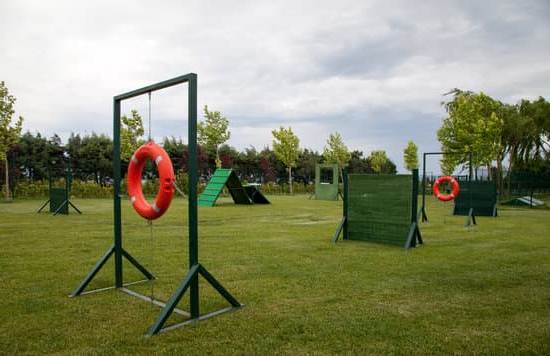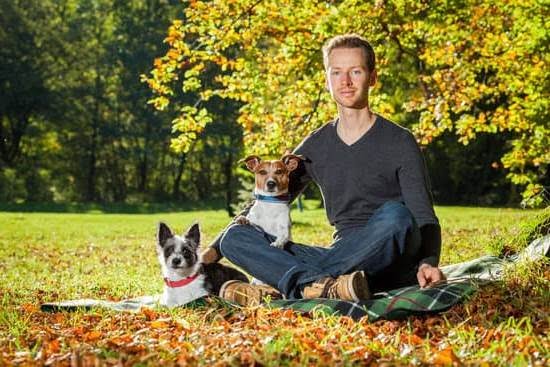How do I train my dog to stop chasing cars? For many dog owners, this is a common concern when their furry friend exhibits this potentially dangerous behavior. In this article, we will explore the reasons behind why dogs chase cars and provide step-by-step guidance on how to train your dog to stop this risky behavior.
Understanding the behavior of why dogs chase cars is essential in addressing and correcting this habit. By delving into the underlying reasons behind this behavior, dog owners can take proactive steps to modify their pet’s conduct and ensure their safety.
Moreover, we will discuss the potential risks and consequences associated with car chasing, highlighting the importance of addressing and correcting this behavior. Additionally, we will provide practical techniques for establishing a strong foundation through basic obedience training and desensitization training to gradually expose your dog to cars in a controlled environment. We will also delve into methods for redirecting your dog’s behavior and the significance of maintaining consistency in training routines.
Dangers of Car Chasing
Car chasing can be a dangerous behavior for dogs, putting them at risk of injury or even death. When a dog chases after cars, they are in danger of being hit by a vehicle, leading to serious injuries or fatalities.
Additionally, car chasing can also pose risks to the drivers and other pedestrians on the road. It is important for dog owners to understand the potential dangers and consequences of their dogs chasing cars in order to take proactive steps to address this behavior.
One of the main dangers of car chasing is the risk of traffic accidents. Dogs are often unable to judge the speed and distance of approaching vehicles accurately, and as a result, they may run into oncoming traffic and get hit by a car. This can lead to severe injuries such as broken bones, internal injuries, or head trauma. In some cases, it can even result in the death of the dog.
Another risk associated with car chasing is the potential for behavioral issues. A dog that frequently engages in car chasing may become highly reactive or anxious around vehicles. This can lead to an increased likelihood of aggressive behavior towards cars or develop anxiety-related problems. Additionally, persistent car chasing behavior can cause stress and frustration for the dog, impacting their overall well-being and quality of life.
Overall, it is crucial for dog owners to recognize the serious risks and consequences associated with car chasing behavior. By understanding these dangers, pet parents are better equipped to take measures to address this issue through training and management techniques aimed at keeping their dogs safe from harm.
Step 1
When it comes to training a dog to stop chasing cars, establishing a strong foundation in basic obedience training is essential. This foundation provides your dog with the necessary skills and understanding to follow commands and control their behavior. Here are some key steps to help you establish this crucial foundation:
- Teach basic commands: Start by teaching your dog basic commands such as sit, stay, and come. These commands will form the basis for further training and will provide you with control over your dog in various situations.
- Use positive reinforcement: Positive reinforcement techniques, such as giving treats or praise when your dog obeys a command, are effective ways to encourage good behavior. This will also help build a strong bond between you and your furry friend.
- Consistency is key: Consistently enforce the rules and commands you have established. Dogs thrive on routine and consistency, so make sure that everyone in your household is on the same page when it comes to training.
By laying this groundwork through basic obedience training, you can set the stage for successful car-chasing behavior modification. Remember that these are foundational skills that will benefit your dog throughout their entire life.
In addition to basic obedience training, it’s important to ensure that your dog understands how to walk politely on a leash and maintain focus on you as their handler. This will be particularly valuable when working on desensitization training around cars. As you establish this strong foundation, keep in mind that patience and persistence are key. Training takes time and effort, but the rewards of having a well-behaved and safe dog are well worth it.
Step 2
Desensitization Training is a crucial step in teaching your dog to stop chasing cars. This process involves gradually exposing your dog to cars in a controlled environment in order to reduce their fear or obsession with chasing them. Here are some steps and tips on how to effectively desensitize your dog to cars:
1. Start at a Distance: Begin the training by keeping your dog at a safe distance from the road where they can see and hear passing cars, but are not in immediate danger. This could be in a quiet parking lot or on a sidewalk with minimal traffic.
2. Use Positive Reinforcement: Whenever a car passes by and your dog remains calm, reward them with treats and praise. This will help them associate the presence of cars with positive experiences, gradually reducing their urge to chase.
3. Gradually Decrease the Distance: Over time, gradually move closer to the road as long as your dog remains calm and focused on you instead of the passing cars. If they become anxious or start to fixate on the cars, move back to a comfortable distance and continue working from there.
4. Be Patient and Consistent: Desensitization training takes time and patience, so it’s important to be consistent with your efforts. Practice regularly in different locations with varying levels of traffic to ensure that your dog becomes comfortable with cars in various environments.
It’s important to remember that desensitization training should always be done at your dog’s pace and comfort level. Rushing this process can create more anxiety for your pet, so take it slow and celebrate any progress made along the way.
Step 3
When it comes to training your dog to stop chasing cars, one effective technique is to redirect their focus onto something else, such as you. This can be achieved through the use of positive reinforcement and rewards when your dog successfully shifts their attention away from cars and onto you.
One way to do this is by using high-value treats or toys that your dog loves. Whenever a car approaches, you can use these treats or toys to grab your dog’s attention and reward them for focusing on you instead. Over time, your dog will start associating the sight of a car with positive things (i.e. treats or playtime with you) rather than wanting to chase after it.
Another technique for redirecting your dog’s behavior is through the use of clicker training. By using a clicker as a signal for good behavior, followed by a reward, you can effectively teach your dog to look at you for guidance when they see a car approaching. This method helps create a strong bond between you and your dog while also teaching them self-control in distracting situations.
Consistency Is Key: The Importance of Maintaining a Consistent Training Routine
Consistency is crucial when it comes to teaching your dog not to chase cars. It’s important to practice redirection techniques in various environments and situations, gradually exposing your dog to different scenarios where they might encounter cars. Keep in mind that each session should be short and positive, avoiding stressful situations that could potentially undo the progress made.
Here are some common mistakes that pet owners make during car-chasing training:
Failing to Correct Inappropriate Behavior
Neglecting Basic Obedience Commands
Using Punishment-Based Techniques Instead of Positive Reinforcement
By following these tips and avoiding common pitfalls, you can train your dog effectively and safely.
| Training Technique | Description |
|---|---|
| Positive Reinforcement | Rewards dogs for diverting attention away from cars |
| Clicker Training | Teaches self-control and strengthens bond between owner and pet |
Consistency Is Key
Establishing a Routine
When it comes to training your dog to stop chasing cars, consistency is key. Dogs thrive on routine and repetition, so it’s important to establish a consistent training schedule. This means setting aside dedicated time each day to work on training exercises with your dog. Whether it’s practicing basic obedience commands or desensitization training, committing to a regular routine will help reinforce the desired behavior.
Repetition and Reinforcement
Consistency also applies to how you communicate with your dog during training sessions. Using the same cues and commands consistently will help your dog understand what is expected of them. Additionally, it’s important to reinforce positive behaviors with rewards such as treats, praise, or playtime. By consistently rewarding your dog for good behavior, they will be more likely to repeat those behaviors in the future.
Persistence Pays Off
Training a dog to stop chasing cars can be a challenging task, especially if the behavior has become ingrained over time. It’s important to remain patient and persistent throughout the training process. While every dog is different and may progress at their own pace, maintaining a consistent and positive approach will ultimately lead to success. Remember that changing ingrained behaviors takes time, so don’t get discouraged if progress seems slow at first.
Safety Measures
Supervision and Leash Control
When working on training your dog to stop chasing cars, it’s important to always supervise them when they are outside. This means keeping them on a leash at all times, especially in areas where cars may pass by. By keeping your dog on a leash, you can have better control over their movements and prevent them from running after vehicles. Additionally, ensure that the leash is secure and properly fitted to prevent your dog from slipping out of it.
Safe Exercise Areas
To minimize the risk of your dog being in close proximity to moving vehicles, consider finding safe and enclosed areas for exercise and playtime. Look for local parks or designated off-leash areas where there is minimal traffic. These spaces provide a safe environment for your dog to explore and release energy without the temptation of chasing cars.
Identification and Recall Training
Accidents can happen, so it’s crucial to have identification tags on your dog’s collar with current contact information. In case your dog does manage to get away from you and chase a car, these tags can help someone return them safely. Along with this, focus on recall training to ensure that your dog responds promptly when called, even in distracting situations like car traffic. Practice this regularly in a secure environment before attempting it near roads.
Overall, implementing safety measures while working on stopping car chasing behavior is essential for protecting the well-being of your beloved pet. By taking these precautions, you can create a safer environment for both you and your dog during the training process.
Seeking Professional Help
In conclusion, training your dog to stop chasing cars requires patience, consistency, and an understanding of your dog’s behavior. It is essential to recognize that car chasing can be dangerous for both your dog and others, so addressing this behavior is crucial for their safety.
Establishing a strong foundation through basic obedience training is the first step in addressing car chasing behavior. By teaching your dog commands such as “sit,” “stay,” and “come,” you can start laying the groundwork for better impulse control and focus.
Desensitization training is also key in gradually exposing your dog to cars in a controlled environment. This can help reduce their anxiety or excitement around vehicles and minimize their urge to chase them. Additionally, redirecting the behavior by teaching your dog to focus on you instead of cars can further deter this unwanted behavior.
While these steps can be effective for many dogs, it’s important to remember that seeking professional help may be necessary in some cases. A professional dog trainer can provide specialized expertise and guidance tailored to your dog’s specific needs, ensuring a safe and effective training process. With time, patience, and the right approach, you can train your dog to stop chasing cars and keep them safe from potential dangers on the road.
Frequently Asked Questions
How Do I Stop My Dog From Wanting to Chase Cars?
The best way to stop your dog from wanting to chase cars is to work on training and behavior modification. This involves teaching them to focus on you, using positive reinforcement, and creating a strong recall command.
What Does It Mean When a Dog Chasing Cars?
When a dog is chasing cars, it can indicate several things. It could be a natural instinct to chase moving objects, a form of play or excitement, or even a way for the dog to release pent-up energy or frustration.
Why Has My Dog Started Chasing Cars?
There are various reasons why your dog may have started chasing cars. It could be due to boredom, lack of exercise, or not receiving enough mental stimulation. Additionally, if they have previously had success in catching or reaching cars, this behavior can become reinforced. Understanding the root cause is important in addressing this behavior effectively.

Welcome to the blog! I am a professional dog trainer and have been working with dogs for many years. In this blog, I will be discussing various topics related to dog training, including tips, tricks, and advice. I hope you find this information helpful and informative. Thanks for reading!





